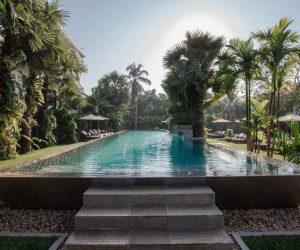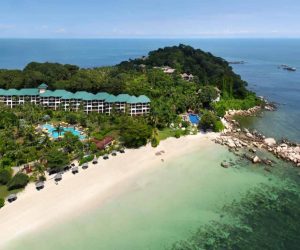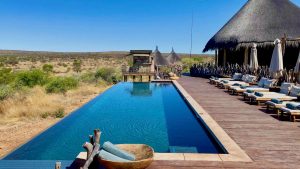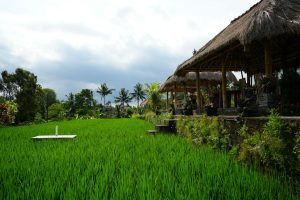
When we think of beautiful temples in Asia, the Taj Mahal in India, Angkor Wat in Cambodia, or perhaps Borobudur in Java might spring to mind. Asia is full of stunning places of worship, reflecting Hinduism, Buddhism and other spiritual practices. Here, we take you on a journey of some of Asia’s lesser-known temples.
Kailasa Temple – Ellora Caves, Maharashtra, India
If you’re inspired by ancient civilisations, you must visit the Kailasa temple in the Ajanta and Ellora caves near Mumbai. An astounding sight, the temple appears to have been excavated out of the surrounding rock. Scholars believe that the ancient caves date back as early as the 2nd century BC. Over 30 monasteries and temples have been expertly excavated from a 2km-long sloping rock face.
Cave no.16 hosts the magnificent Kailasa temple, said to symbolise Mount Kailash, the mystical home of Lord Shiva (one of the most important Hindu deities). This colossal temple is a megalith, carved entirely from one rock, vertically down.
It is intricately carved and features gigantic pillars, columned arcades, and alcoves with sculptures. Hidden from the world for a millennium, the ancient caves and temples are remarkably well preserved. Carving reflects religious tolerance with Hinduism, Buddhism and Jainism all being represented. A UNESCO-listed site, Kailasa and the surrounding temples and caves reflect the sophistication of ancient civilisations and are worth a full day’s exploration. If you crave a little luxury during your stay, Vivanta Aurangabad by Taj Hotels has the perfect blend of modern creature comforts and Mughal architecture.
Prambanan – Java, Indonesia
Built in the 10th century, Prambanan is the largest temple complex dedicated to the Hindu Lord Shiva in Indonesia. It’s 3 prominent temples are decorated with reliefs which illustrate the epic of the Ramayana. These compounds are located on the border between Yogyakarta and Central Java. The Prambanan Temple Compounds are much larger than simply one temple. The complex includes 240 temples within the Prambanan Temple complex alone, plus Sewu Temple, Bubrah Temple and Lumbung Temple. There are actually 508 stone temples in total.

Construction began in the 8th century, during the Sailendra dynasty period within Java. The reign signified a cultural renaissance as the Sailendra’s promoted Mahayana Buddhism with a Hindu influence. They covered the Kedu Plain of Central Java with Buddhist monuments, most notably the magnificent Borobudur. Award-winning luxury resort Amanjiwo is the perfect place to stay while touring these ancient sites. It is only 2km from Borobudur and an easy 1hr 20 minutes away from Prambanan. This divine retreat is fringed by rainforest and rice fields and offers panoramic views of the Kedu plain, with mystical Borobudur in the distance.
Banteay Shrei – Siem Reap, Cambodia
Banteay Shrei is a beautiful, pink-tinged sandstone temple 23km north of the famous Angkor Wat complex in Siem Reap, Cambodia. Banteay Shrei translates as ‘Citadel of Women’. It’s ornate and delicate carvings, which depict Hindu tales, are claimed to have been carved by women. Take a slightly bumpy yet fun ride from the Angkor Wat complex to see this temple. It’s definitely worth the journey. Unlike Angkor Wat, Banteay Shrei’s softer, red sandstone allowed for easier carving and more intricate reliefs. Each entrance is covered with female devatas (deities). It’s far more petite than the grandiose Bayon and Angkor Wat itself, but is one of the most beautiful in Siem Reap.

Kyichu Lhakhang – Paro, Bhutan
There are so many stunning temples and monasteries in the mystical land of Bhutan, that it’s hard to choose one. Of course, Tiger’s Nest Monastery, which hangs from a cliff side near Paro, is the country’s most well-known and photographed. Here, we feature Kyichu Lhakhang, one of the oldest temples in Bhutan. It was built by Tibetan King Songsten Gempo in the 7th century.

Legend states that it was constructed to prevent an evil spirit from halting the spread of Buddhism. The original temple is said to have been built overnight on the left foot of a gigantic ogress or demoness, who was stopping the spread of Buddhism as she lay across the land. The Second Buddha, Padmasambhava, was thought to pilgrimaged to Kyichu Lhakhang in the 8th century. It was noted that he hid treasure teachings on the grounds. Kyichu Lhakhang is only 10 minutes from the centre of Paro, so it’s a simple visit at the beginning or end of your Bhutanese adventure. The international airport is in Paro and nearby COMO Uma Paro and Bhutan Spirit Sanctuary offer health and wellness offerings with personalised tours via travel agents.
Kuramakibunecho – Kyoto, Japan
Kyoto is famed for its classical Buddhist temples, shrines, and imperial palaces, so it’s hard to choose just one lesser-known temple. It was Japan’s capital city from 794 to 1868 and is one of the ten largest cities in Japan to date. Over the years, Kyoto suffered destruction during countless wars, yet beautiful temples and shrines survived. Kuramakibunecho is the temple at the top of the Kurama to Kibune hike. There is a mark in front where it is said that the god of the temple descended. The Kurama locals like to stand at this spot and make a personal wish.

Ayutthaya–Thailand
The historic city of Ayutthaya was founded around 1350 and became the second Siamese capital after Sukhothai. Between the 14th to the 18th centuries, Ayutthaya flourished, becoming one of the world’s largest and most cosmopolitan urban areas and a centre of global diplomacy and commerce.

Ayutthaya’s city layout comprised roads, canals, and moats around all the principal structures. The city was strategically positioned in the middle of three rivers and had an extremely advanced hydraulic system, which was unique in the world. Destroyed by the Burmese in 1767, the prang (towers) and gigantic monasteries offer a glimpse of its former splendour. When the capital was relocated south to Bangkok, they brought many of the surviving architects and builders from Ayutthaya to help create the new capital and replicate some of Ayutthaya. This urban replication shows architects consciously trying to emulate the perfection of the mythical city of Ayodhaya.
Bagan – Myanmar
Imagine over two thousand stunning red brick temples and pagodas scattered across the plains of Myanmar. The ancient Bagan temples are the legacy of the Paukan kings. Built 1057 and 1287 AD, the area was the first capital of Myanmar (formerly Burma). During this time Bagan was known as the political, economic and cultural hub of the Pagan Empire. Over the next 250 years, Bagan’s rulers and wealthy subjects constructed over 10,000 religious monuments across the Bagan plains, devoted to Buddhism. The remaining 2200 temples and pagodas display impressive architecture, colourful murals, and beautiful statues. Travel may be off currently off-limits, because of the coup d’état in Myanmar, but this stunning World Heritage Site by UNESCO is certainly one for the bucket list!

Modhera Sun Temple – Gujarat, India
An ancient Hindu temple constructed in 1026c during the Chaulukya dynasty, Modern Sun Temple is a dazzling sight to behold. Built in the Maru-Gurjara style, the temple is dedicated to Surya, the Hindu God of the sun. The temple complex is divided into 3 parts; the shrine hall Gudhamandapa, the assembly hall Sabhamandapa, and the reservoir Kunda. It was constructed during every equinox when the first rays of the sun would fall onto a diamond resting upon Surya’s head. The Sabha Mandap stands on 52 pillars, depicting each week of the year. It is located on the river Pushpavat and the nearest airport is Sardar Vallabhbhai Patel (Ahmedabad).

On the banks of the Saraswati river, only one hour away from the Sun temple, is the Ranki ki Vav stepwell. This holds great spiritual significance, as it reflects the purity of water, illustrated on the carved stone deities. Imagine it as a subterranean temple, with the steps beginning at ground level, leading you down through pillared pavilions to reach the deep well below. There are over 800 sculptures and 7 galleries. The best overnight luxury stay in Ahmedabad is the Taj Skyline and you can also combine this with a private tour over 5 days covering both Ahmedabad and Udaipur.
Sambor Prei Kuk – Kampong Thom Province, Cambodia
Sambor Prei Kuk translates from Khmer as ‘the temple in the richness of the forest’. It rests within the archaeological site of ancient Ishanapura, which was the capital of the Chenla Empire that reigned during the late 6th and early 7th centuries AD. It is located 176 km east of Angkor and includes over one hundred temples built in Pre-Angkorean style.

Wat Xieng Thong – Luang Prabang, Laos
Luang Prabang is home to more than 30 temples, including Wat Xieng Thong which was built around 1560. Delicately carved, there are over twenty structures on the grounds, including shrines, pavilions, and residences. The surrounding gardens are home to beautiful flowers and trees.

Wat Xieng Thong is one of the most important monasteries in Laos, a symbol of the spirit of religion, royalty, and tradition. Stay at the sublime luxury resort Amantaka in Luang Prabang. Resting on a historic palm-lined estate, complete with private pools and a modern spa, it’s the perfect base to explore the charm of the surrounding UNESCO World Heritage Site. Private temple visits can be arranged, either for quiet meditation alone or joining annual festivals.
Joanne McFarlane is the Founder and Managing Director of Soul Sanctuaries. Soul Sanctuaries is a luxury wellness travel company specialising in tailormade healthy holidays and bespoke spiritual retreats across Asia.
If you would like to be a guest blogger on A Luxury Travel Blog in order to raise your profile, please contact us.






